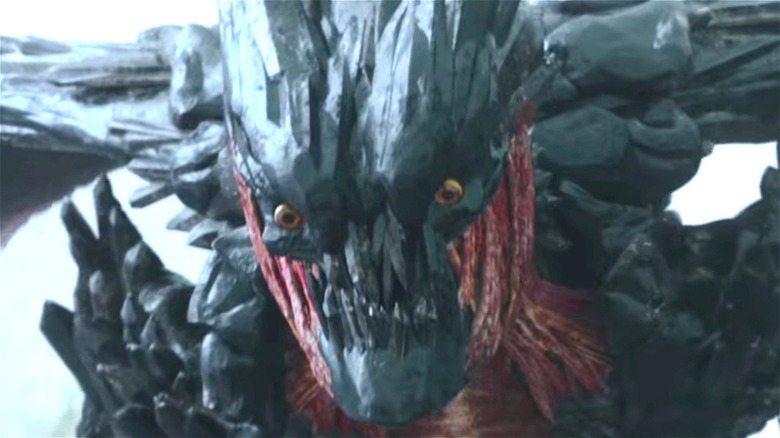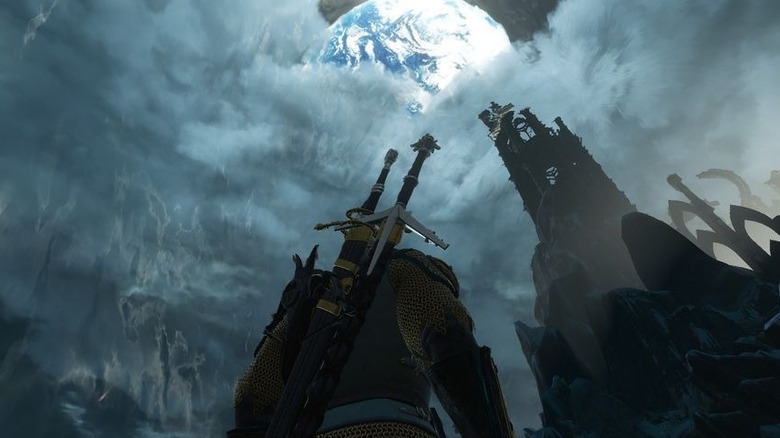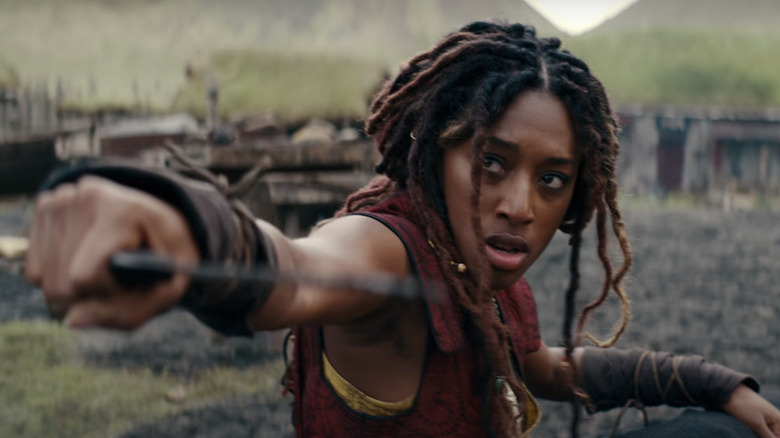The Witcher's Conjunction Of The Spheres Explained
Contains minor spoilers for Season 2 of "The Witcher"
Geralt of Rivia (Henry Cavill) goes up against a number of bloodthirsty monsters throughout the dangerous world of Netflix's "The Witcher," and they give many episodes a horrific flair. Whether it's the Kikimora, Striga, Bruxa, or the Leshy, the monster slayer certainly has his hands full. Then there's the fact that whenever Ciri (Freya Allan) screams, she unleashes other terrifying monsters from inside the black monoliths scattered around the Continent. That's all without mentioning the political intrigue, the Northern Kingdoms' war with Nilfgaard, and Geralt's complicated romance with Yennefer of Vengerberg (Anya Chalotra).
Season 2 deepens the lore behind the Continent, as Yennefer, Fringilla (Mimi Ndweni), and Francesca Findabair (Mecia Simson) are all wrapped up in a dark conspiracy to resurrect a malevolent demon called Voleth Meir (Ania Marson). Oh dear. The show also briefly touches on why the Continent is crammed with humans, elves, dwarves, and monsters. For this history, it calls back to an event long ago in the timeline called the Conjunction of the Spheres.
In "The Witcher" books by Andrzej Sapkowski, the Conjunction of the Spheres takes place over a thousand years before Geralt's adventures with Vesemir (Kim Bodnia), Yennefer, and Ciri. In fact, it's the reason why the Continent is such a dangerous place to live.
The Conjunction of the Spheres combined different realms
Before the Conjunction of the Spheres, this dimension was home to elves, gnomes, and dwarves. However, the cataclysmic event caused different universes to crash into one another. And it brought a countless number of other beings into the world, like all the monsters that Geralt and his friends go up against in "The Witcher." It also brought separate races of human beings into the Continent. In the books by Sapkowski, the historian character Arnelius Grock says that the Drauk, Wozgor, and Nordling people were all human, although they all spoke different languages and had different customs.
Monsters and humans weren't the only things to come through the Conjunction of the Spheres, though. The disaster also brought magic/chaos into the Continent. Eventually, humans realized they could tap into the mysterious force to cast spells, which is how the Brotherhood of Sorcerers got started. Humans also decided to stake their claim on this new world for themselves, and surprised the elves with their savagery. As per a bit of lore text from the games, "Looking for a place in the world, humans took up arms against the Elder Races, who were unable to withstand the barbarians and ultimately surrendered. This is how humans came to rule the world" (via Fandom).
A second Conjunction briefly happens in the critically acclaimed video game, "The Witcher 3: The Wild Hunt." It once again brings new creatures into the world, and even causes the elves to leave the Continent in search of a new realm to call home.
The Witcher: Blood Origin is based on the Conjunction of the Spheres
Because the Conjunction of the Spheres is such a pivotal event in the history of the Continent, Netflix is diving into that era with a spin-off series called "The Witcher: Blood Origin." It's set right before the Conjunction of the Spheres and will look at how the elven empire collapses after the disaster takes place. "Blood Origin" will also reveal how the Conjunction happened in the first place, and it'll even explain how the first Witcher was created. So, it's going to be a must-watch for fans who want to learn more about the Continent.
"Iron Fist" writer Declan de Barra is the showrunner on "Blood Origin" — but don't worry, "The Witcher" showrunner Lauren S. Hissrich is also an executive producer on the series. This means it'll all fit nicely together in the timeline, and it should hopefully answer some key questions that fans have about the universe. Hissrich told Entertainment Weekly, "We have obviously heard in the Witcher show that humans brought civilization to the elves. They're the ones who showed them what it was like to be civilized." She also added, "And in fact, what we're seeing in Blood Origin is that's exactly opposite of the truth."
Netflix has amassed an impressive cast for "Blood Origin," as Michelle Yeoh, Lenny Henry, Dylan Moran, and Laurence O'Fuarain all have leading roles. The first trailer for the series arrived as the mid-credits scene at the end of "The Witcher" Season 2, and it shows off an uneasy alliance between Éile (Sophia Brown), Fjall (Laurence O'Fuarain), and Scian (Michelle Yeoh). Luckily there isn't long to wait, since "Blood Origin" arrives in 2022.


